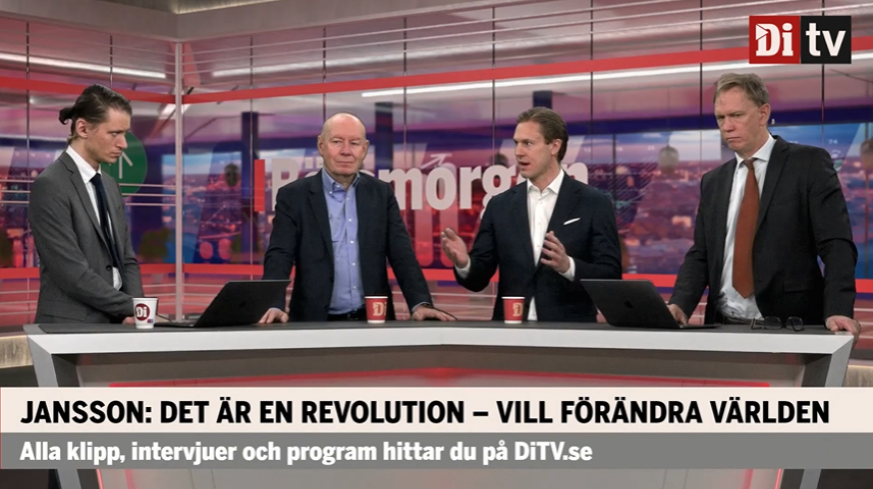This morning, our portfolio manager, CEO, and partner Alexander Jansson appeared on Dagens Industris Börsmorgon to explain, among other things, why Trump is imposing tariffs. He outlined the global trade balance, where the USA consumes significantly more than it produces, which makes the country increasingly dependent on imported goods, especially from China. China, which today accounts for a large portion of the world’s manufacturing production, has grown stronger in this sector, negatively affecting the US economy. Trump has tried to counter this by imposing tariffs and trade restrictions in an attempt to reduce the US trade deficit with China and strengthen the American manufacturing industry.
In today’s episode of Börsmorgon, Alexander highlighted that the loss of manufacturing share from the US and Western allies to China over the past 30 years has become increasingly evident. In 1995, the US accounted for 23.6% of global manufacturing production, while China had a much smaller share of 4.9%. Today, the situation has reversed, and China now holds the largest share of global manufacturing production, at 31.8%, while the US share has decreased to 15%. This shift, in which China has become a dominant player in the manufacturing industry, is one of the main reasons for the increased trade conflict. Trump and many others have tried to restore the balance by moving production back to the US and reducing dependence on China.
During his recent visits to Börsmorgon, Alexander has provided updates on the relationship between Europe and the USA. In today’s episode, he shared a positive outlook on Europe’s development. At the beginning of this year, Europe had underperformed by as much as -70% compared to the US since 2007 (approximately 17 years). Never before, with data dating back to 1969, has Europe underperformed by such a large margin for such an extended period. According to the latest graph from Börsmorgon, however, this relationship has now changed. Since the beginning of the year, Europe has outperformed the US by +21%, which is the largest outperformance since Europe started underperforming in 2007.
Alexander also mentioned that there are signs of a trend reversal suggesting that Europe is on its way back. Europe vs. the US and Value vs. Growth have been clearly linked since at least the turn of the millennium. In recent years, trends where Europe has underperformed compared to the US and growth stocks have outperformed value stocks have created a long-term pattern that began around 2007. The latest graph shows that both of these trends, which have lasted for over a decade, now appear to be breaking.
Alexander also discussed the likelihood that the risk premium for Europe would decrease in the event of a ceasefire or peace agreement in Ukraine, with the probability estimated at about 50%. The risk premium is historically low in the US, while it is historically high in Europe. This means that Europe is record-cheap relative to the US. The market value of US stocks constitutes a record-high share (over 65%) of the global stock market value, but their earnings do not reflect this (55%).
Finally, Alexander informed about the Mar-a-Lago Accord and what it might entail. The USD has been very strong relative to the historical trend. In 1985, the USD was also very strong, leading to an agreement with other countries to weaken the USD, known as the Plaza Accord. Today, there is a similar agenda to weaken the USD, known as the Mar-a-Lago Accord.
Watch Börsmorgon here. (In Swedish).

